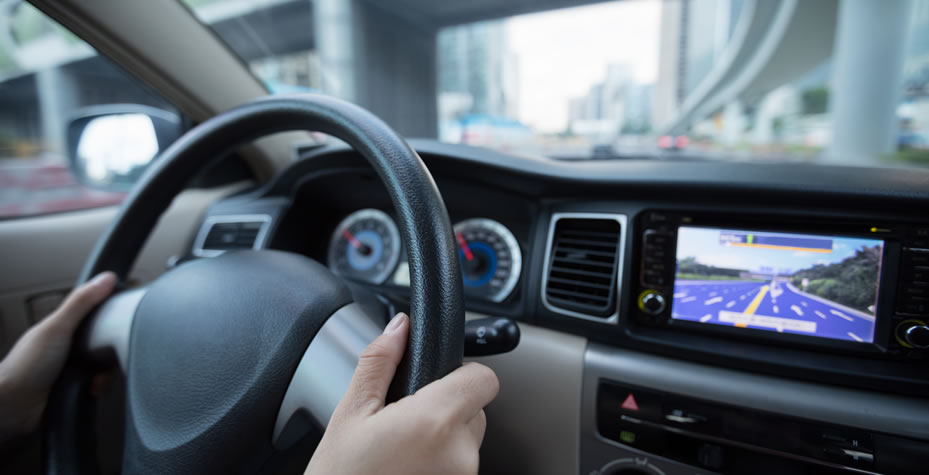
When you think of all the things that can distract a driver, the most notable thing that most people think about is their cell phone. It’s highly likely that if you’re a distracted driver, the source of your divided attention is your smartphone.
With all the inherent features of a phone such as calls and texting, added to the non-stop notifications from email and social media, it’s easy to see why having the phone in the car can lead to a driver pulling their attention from the road.
According to statistics website statista.com, 81% of adult Americans own a smartphone . That’s a 46% increase since 2011...and many more chances for those same smartphones to be the source of distracted driving.
With that kind of increase in potential cellphone use while driving, it’s no surprise that such a thing as “inattention blindness” occurs in drivers, causing them to be cognitively distracted and unable to react appropriately to things they see on the roadway ahead of them.
We all know that if our phone pings, or makes a noise of any kind, we are compelled to pick it up. We do it subconsciously, and it’s the equivalent of a 21st century Pavlovian response.
The good news is that automakers have developed some pretty advanced systems in vehicles to help drivers, distracted or not, be safer on the road.
Here is a list of just a few of the new safety systems that you can find on today’s vehicles:
Lane Departure
Lane departure warning systems are a more advanced system that notifies a driver when they are drifting outside of a lane without a turn single being engaged. In most vehicles this shows on the LED dash and is often times accompanied by an audible alarm to get the driver’s attention.
This system relies on a camera to view where the lane markers are. If you get too close to one side of your lane, then get ready to be notified by a light or sound to snap you back to attention.
This is a helpful feature because, aside from helping to prevent a possible side swipe collision, this system can help keep drivers on the road surface and out of a dangerous scenario that could be a potential rollover accident.
Blind Spot Detection
This is another system that relies on a camera or a radar sensor to alert the driver to vehicles in adjacent lanes. This system most commonly alerts the driver with a ding and/or a visual queue on the side mirror and LED instrument dashboard. It's just another system helping you detect dangers that you otherwise may be unable to see.
Forward Collision Avoidance
A forward collision warning system continuously scans the speed of the vehicle. Using a complex array of sensors, the system also measures the speed of the vehicle ahead of yours, and calculates the distance between the two. If the distance between your vehicle and the one in front closes too quickly, you’ll receive an alert to brake.
If the driver does not brake accordingly, the system will apply the brakes automatically to avoid a frontal collision and avert any injury or damage to the cars.
Pedestrian Automatic Emergency Braking (PAEB)
This feature is incredibly useful. Aside from the obvious factor of a pedestrian entering the roadway – let’s face it, pedestrians are also distracted while they walk – this system can prevent a driver from striking a pedestrian as they are making a right-hand turn.
Naturally, a driver will look left to make sure they are not turning into traffic, but will let the car make the turn without looking back. In busy intersections this can be dangerous for pedestrians in cross walks.
Luckily, the PAEB uses cameras or radar sensors to detect a pedestrian and automatically apply the brakes to prevent an unfortunate collision.
And That’s Not All
There is a myriad of other features available as well. Including systems that alert the driver to objects behind the car when it is in reverse, to back up cameras that show you the area behind a trailer that you otherwise couldn’t see, and even Wi-Fi connectivity for those pesky and distracting devices (more for the passengers of the vehicle, of course).
All of these advanced systems are incredibly beneficial for the safety of the drivers and those around them. However, advanced systems can require advanced repairs.
But what if the sensors on your advanced safety systems malfunction? That is going to require some advanced technical repair, and advanced repair usually equates to higher repair costs.
If your vehicle is still under factory warranty, you’ll probably be fine, but what if your car isn’t?
That’s when it is worth it to visit CarShield.com and see the plans available that can help cover some of those advanced electrical systems. This way you’ll be able to safeguard those systems that keep you safe.








